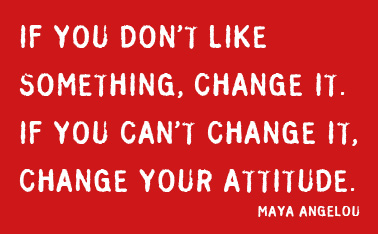Change
- If change is happening on the outside faster than on the inside the end is in sight.
- You have to change before you have to.
- Failure isn’t fatal, but failure to change might be.
- The only way to make sense out of change is to plunge into it, move with it, and join the dance.
- Everyone thinks of changing the world, but no one thinks of changing himself.
- The trees that are slow to grow bear the best fruit.
- Perfection is attained by slow degrees; it requires the hand of time.
- The world changes continuously; seek evolution, not stability.
- One definition of change is doing something you never did before.
- All change in organizations is belief change. So, create belief statements.
- PDCA has been around for decades and pretty much any feedback loop tool/method whether it be Toyota Katas, Agile Retrospectives and even Lean Startup are re-inventions of that cycle
- Each organization is unique and a custom approach to change is absolutely necessary
- change is really hard and unpredictable
- involve the people who are being asked to change in the change itself
- ADKAR method.
You can't make tough decisions without answering tough questions. Avoiding tough questions chokes change.
Organizations that take a mechanistic approach to managing work and people would likely go the route of a re-org because the hierarchy and structure is how work gets done. Organizations that take an organic approach to organizational design will watch how the structure emerges and that's a scary concept for many people. Spotify and Valve are great examples of that.
80% of change programs fail. Fail means negative ROI.
Trying to improve the practices of the engineering department without paying attention to the rest of the organization is similar to trying to change an organ within a body without understanding the impact on the rest of the body.
How do we make long-term changes? How can you stick to writing or meditating or exercising for months on end, for years, to see the amazing results you’d really like to see?
- Focus on the step in front of you. Give up on the results.
- Be curious about what it’s really like when you try it. Give up on the fantasy.
- Be motivated by compassion for yourself and helping others. Don’t be motivated by achieving the ideal.
- Savor the slow change. Don’t be caught up in quick results.
- Find happiness in the learning. Forget about the happiness of the outcome.
- Learn about yourself is the entire point. Don’t worry about perfect execution.
And you will learn about yourself. You will have slow change. You will help yourself and others through this change. You will find out what it’s really like when you put in the effort. You will find happiness in each step, in the learning you experience along the way.
Pearls for Change
| Change | Goal: | Therefore: |
|---|---|---|
| Flow of change | know where you are and what to do next | |
| Microresolution | ||
| Pearl language | evolve the whole and solve complex problems and achieve complex goals using plain English |
Sources
- Kotter
- Drucker
- Senge
- Peter Lencioni (5 Dysfunctions of a Team, Getting Naked)
- Heath brothers (Made to Stick and Switch)
- Virginia Satir
- Myers Briggs (and other Jung-based models like Discovery Insights)
- "Images of Organization" by Gareth Morgan (circa 1984) tremendously valuable as far as understanding organizational design patterns and structures
- http://blogs.hbr.org/taylor/2013/09/the_more_things_change_the_mor_1.html
- 50 reasons why we cannot change
- Change Artistry—Essays on Change Artistry by Esther Derby.
- University of Tasmania » Coaching conversations for change (part 1)
- HBR » Rita McGrath » The Pace of Technology Adoption is Speeding Up
- Seth’s Blog » Seth Godin » Done to us vs. things we do
- InfoQ » Craig Smith » Esther Derby on Language, Communication and Change
- Seth’s Blog » Seth Godin » What does it sound like when you change your mind? on paradigm shift.
- HBR » Greg Satell » To Create Change, Leadership Is More Important Than Authority
- Big Think » Alan Watts » Alan Watts on Change
- HBR » David Brendel » Stress Isn’t a Threat, It’s a Signal to Change
- Faster Than 20 » Eugene Eric Kim » Principles For Effecting Change In Complex Social Systems
- zenhabits » Leo Babuta » The Frustratingly Slow Pace of Making Changes
- http://blog.atos.net/blog/2014/03/17/agile-myths-change-without-cost/
